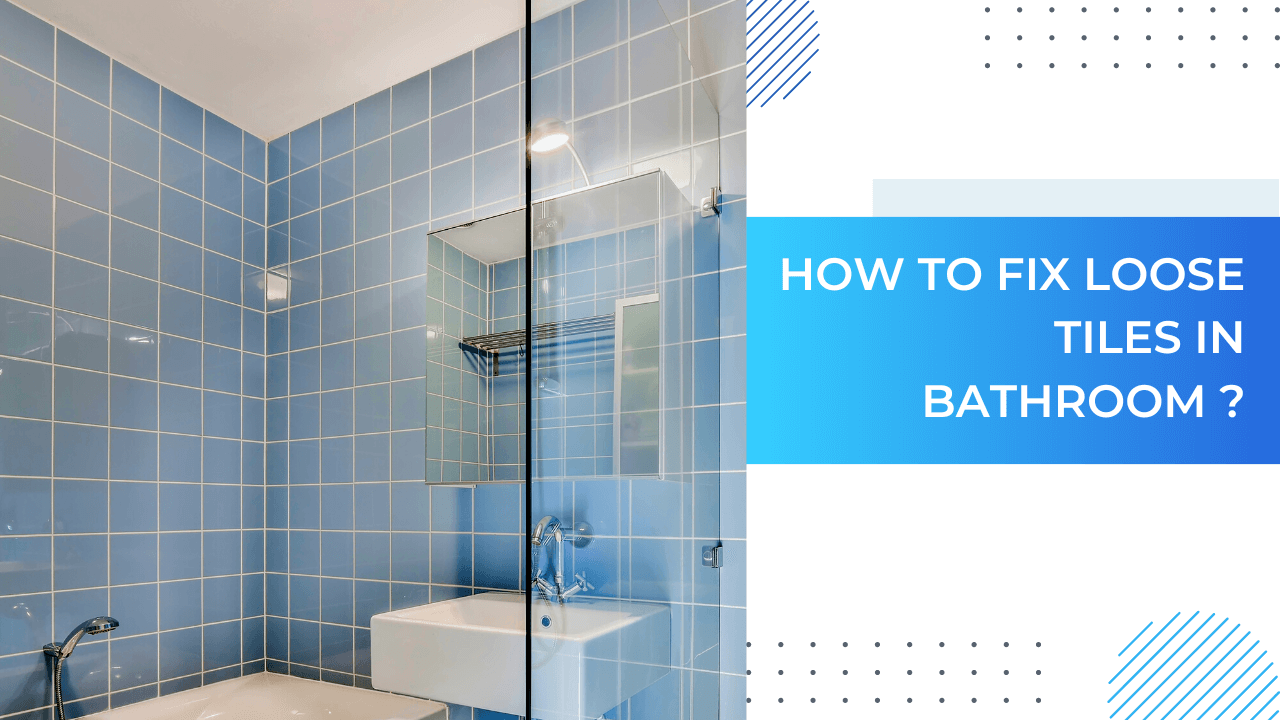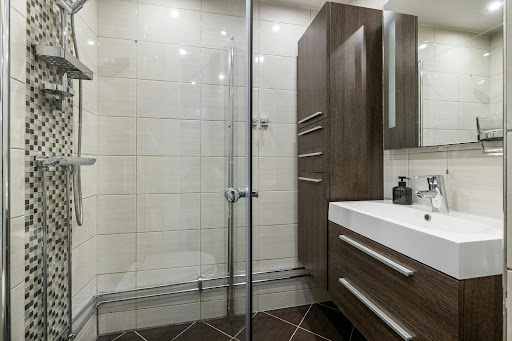Tiles are a common choice for bathroom and kitchen flooring. They’re tough, long-lasting, cleanable, and waterproof. Despite their strength, tiles will ultimately wear out, break, or loosen. It’s ideal for addressing these issues as soon as possible, before they worsen, such as water seeping behind a cracked tile and causing mold to grow.
This article will explain what causes tiles to loosen, how to fix loose floor tiles, whether you’re new to flooring or have some expertise and want to learn more.
Fixing a loose tile on the bathroom floor or replacing a damaged shower tile are both typical tasks, and it’s better to get started as soon as you notice a problem. It not only looks shabby if you leave it for a while, but it also has the potential to cause more harm if not addressed promptly.
Table of Contents
Reasons For Loose Bathroom Tiles
There are a variety of causes for bathroom tiles to shift out of position, and practically every homeowner will face this issue at some point during their time caring for a property. Hot water is essential in every bathroom, but it will quickly damage the seal that your tiles have and become the leading cause of several issues in the bathroom.
1) Changes In Heat And Cold Level
Tiles, like most things, expand in hot weather and contract in cold weather. It’s a small and undetectable difference in size, but it adds too much moving and changing when multiplied by a considerable number of tiles. Thermal changes can cause loosening or breaking of tiles, which makes sense.
2) Inappropriate House Movements
As the base shifts and the walls shift, a small perimeter is left between the wall and the floor tiles. Tiles can loosen or crack if no perimeter is installed or if the home shifts outside of that perimeter.
3) Tightness Level Of Adhesive
The tiles will loosen more quickly if the glue used to bond the tile to the floor beneath it isn’t strong enough. Most adhesives will inevitably deteriorate over time.
Thus even a high-quality glue will eventually result in loose tiles. If the glue is excessively thick, it enables too much gap between the tile and the floor underneath it, especially when utilizing the spot-bonding method described above.
If the adhesive is too thin, it will not hold the tiles to the surface for very long. Moreover, A big difference between the tile’s underside and the surface beneath it might cause tiles to loosen and crack more quickly.
Steps To Fix The Loose Tiles In The Bathroom
The state of the floor will determine the degree of difficulty after the tiles have been removed and the amount of effort required to restore them to their original condition.
By enlisting the help of a professional contractor, you may avoid the headache of what could become a time-consuming task. Professionals are always ready to assist with any work, no matter how big or small.
1) Target The Grout
Cut into the grout with a tool knife and dig it away from the problematic tile to make them easier to remove. Make sure not to target the tiles that are not affected. Otherwise, you may put more effort into maintaining the whole floor later.
2) Remove The Damaged Tiles
You may have to shatter the tile into small pieces to remove it. The most significant issue here is that some of the adjacent tiles are easily broken. Remove the grout from the tile joints surrounding the damaged tile with a grout saw or another tool. Make sure not to cut through any waterproofing membranes beneath or behind the tiles.
3) Repair The Affected Area
Before continuing, double-check that any waterproof membranes are in good condition. To ensure there isn’t a leak beneath the tiles you’re replacing, you may need to repair rubber or vinyl membranes, and the procedures for doing so differ depending on the membrane.
Dislodge any old adhesive from the wall with your hammer and chisel. If you damage the wall, you’ll have to repair it, which might turn into a far more expensive project.
4) Apply New Layer Of Adhesive
Apply a glue coating to the wall and the back of the tile you’re replacing with a tiny trowel. If you’re replacing more than one tile, do it one at a time. You may need to apply this substance with a putty knife for modest repairs.
5) Re-install The Tile
Place the tile in the desired location and press it down, leaving an even amount of space around each side. If any adhesive leaks through, wipe it up as soon as possible with a moist rag. Allow at least 30 minutes and more than one day for the adhesive to set.
6) Add A New Layer Of Grout
Allow the tile glue to dry completely before grouting the joints around any new tiles you’ve installed. Remove excess grout from the tile’s surface with a sponge and plenty of water. It is difficult to remove this material once it has dried and set.
Repair any joints that don’t lend themselves to groutings, such as metal trim or fixture penetrations, with an excellent, watertight bathroom sealant or caulk.
Final Verdict
Natural house movement, temperature variations and incompatibility between the tile and the floor underneath are all causes why tiles fracture or loosen.
Fortunately, you don’t need to be a home repair expert to maintain your tile flooring; it’s relatively affordable and straightforward to pull up and relay an unbroken loose tile or replace a cracked tile on your own by following the discussed tips and instructions.





